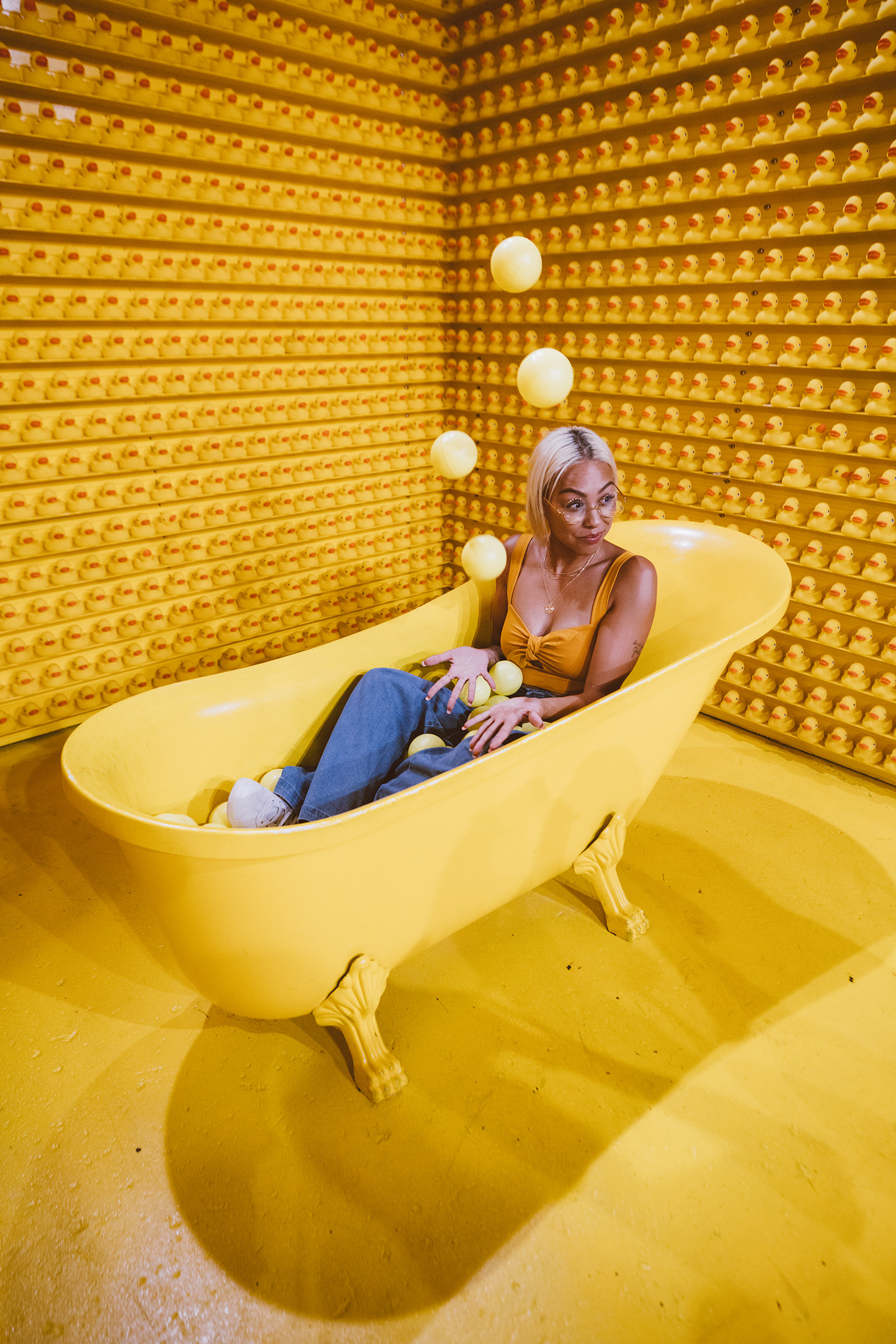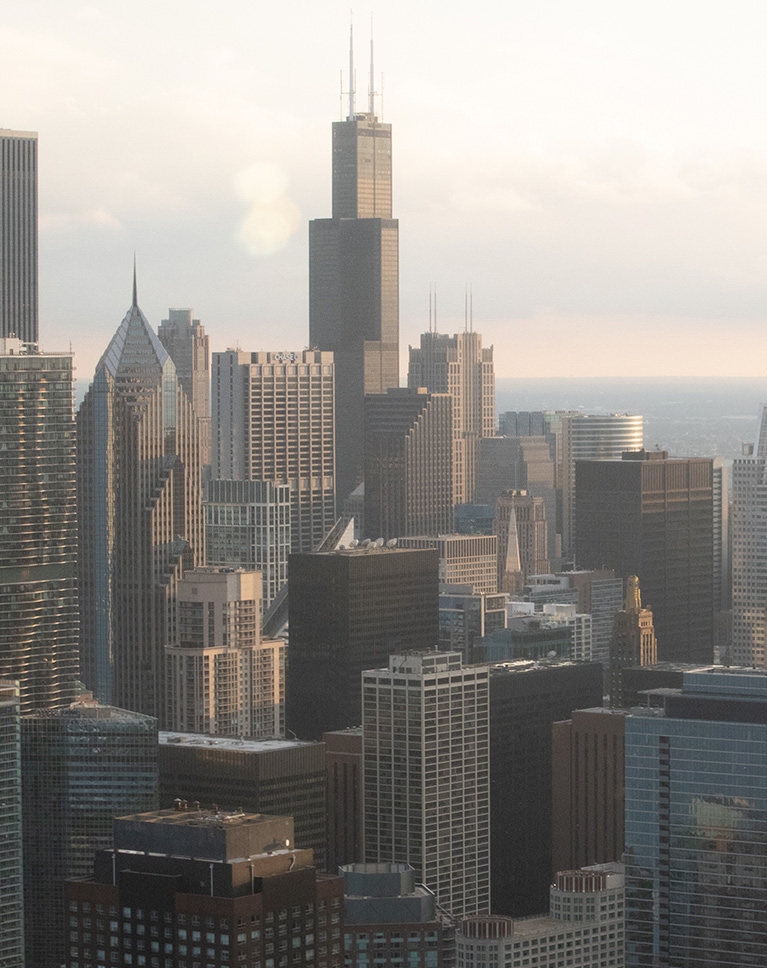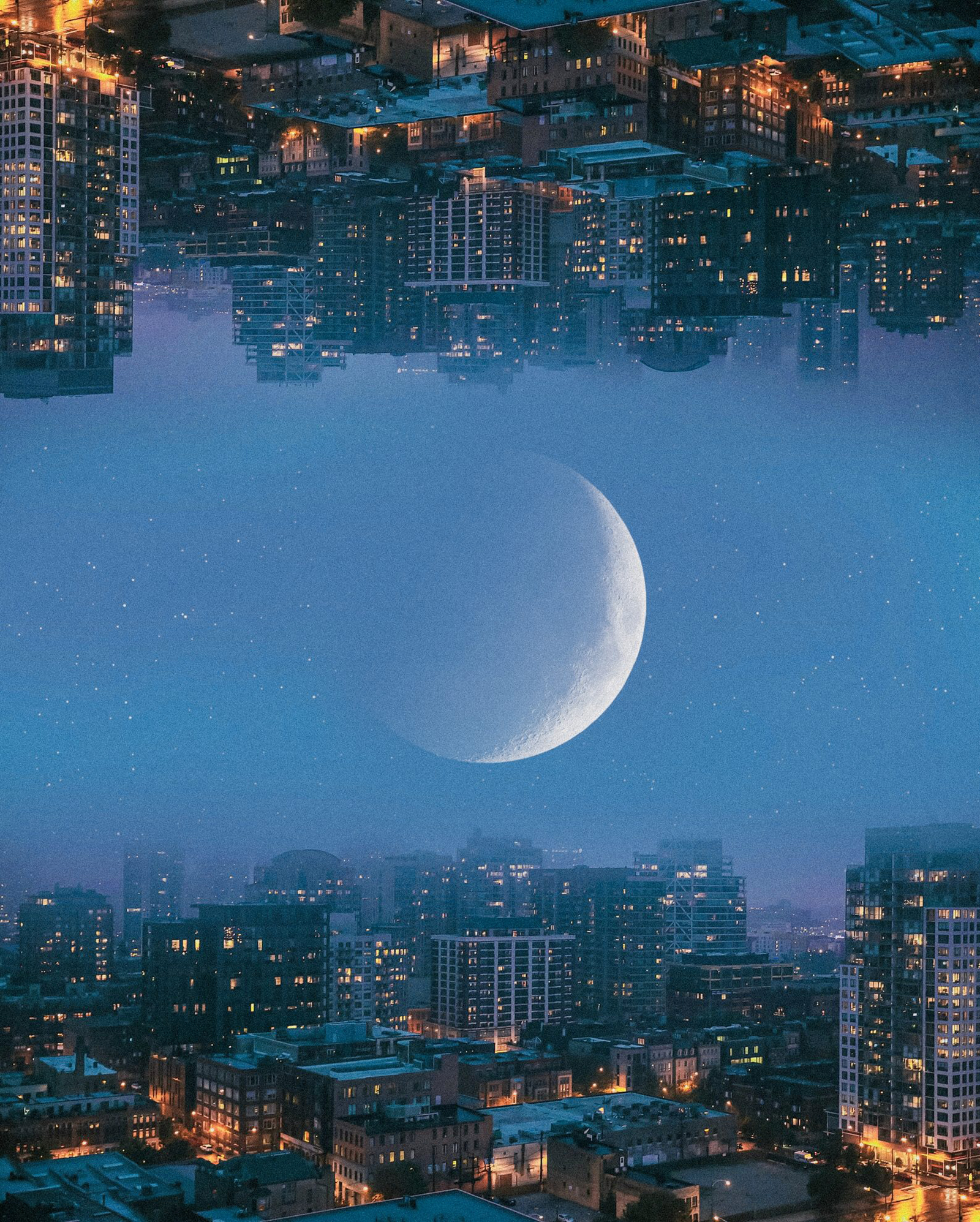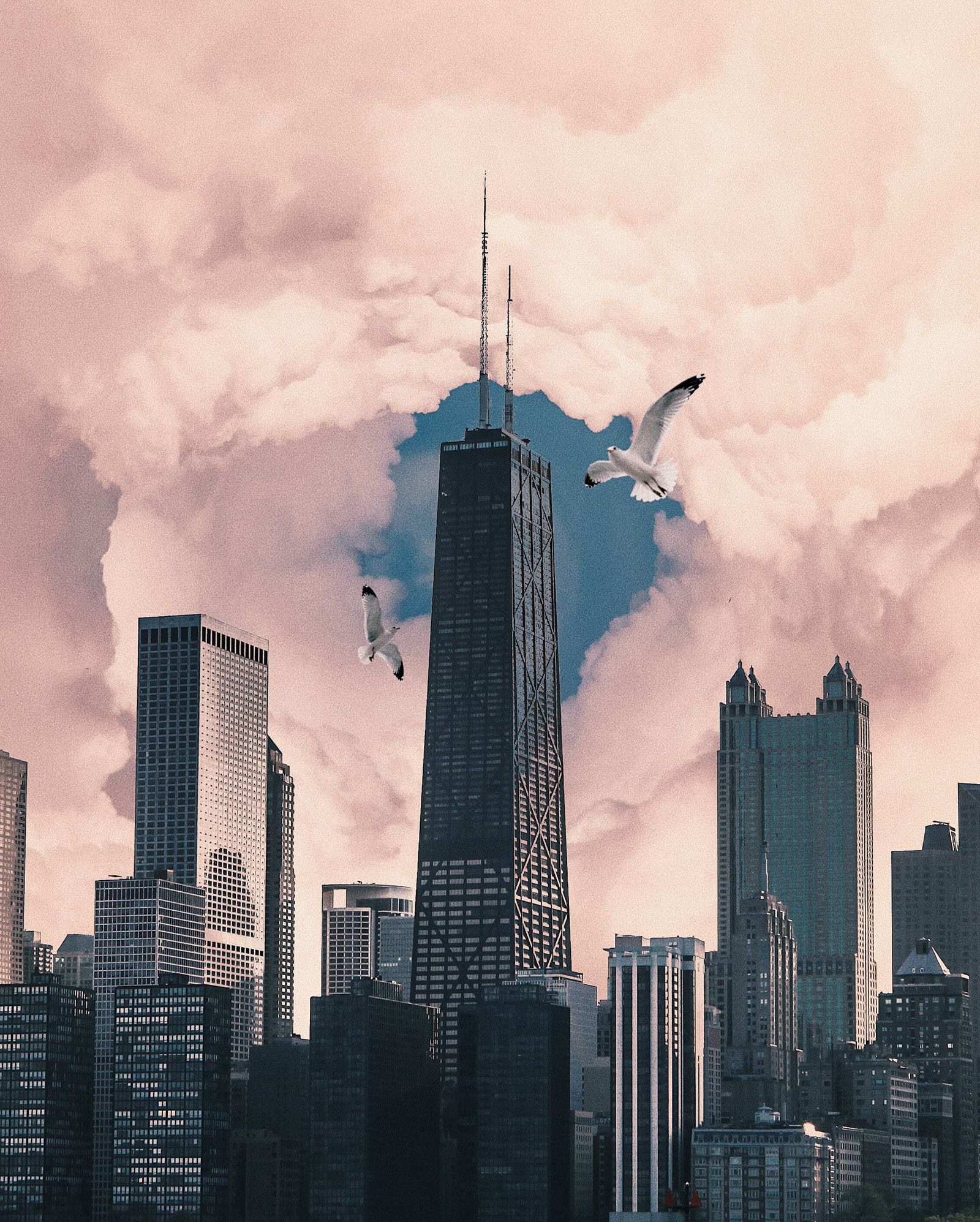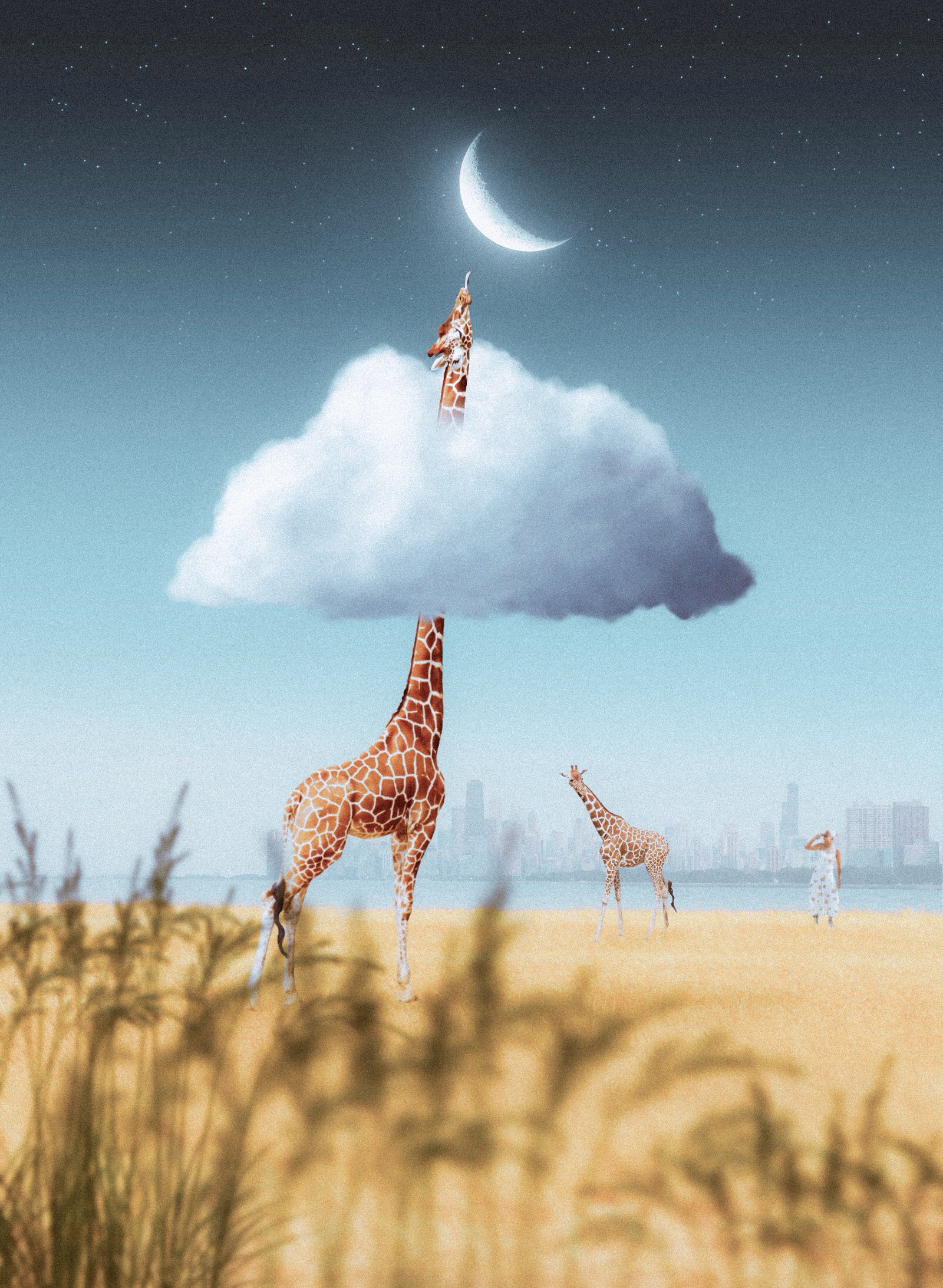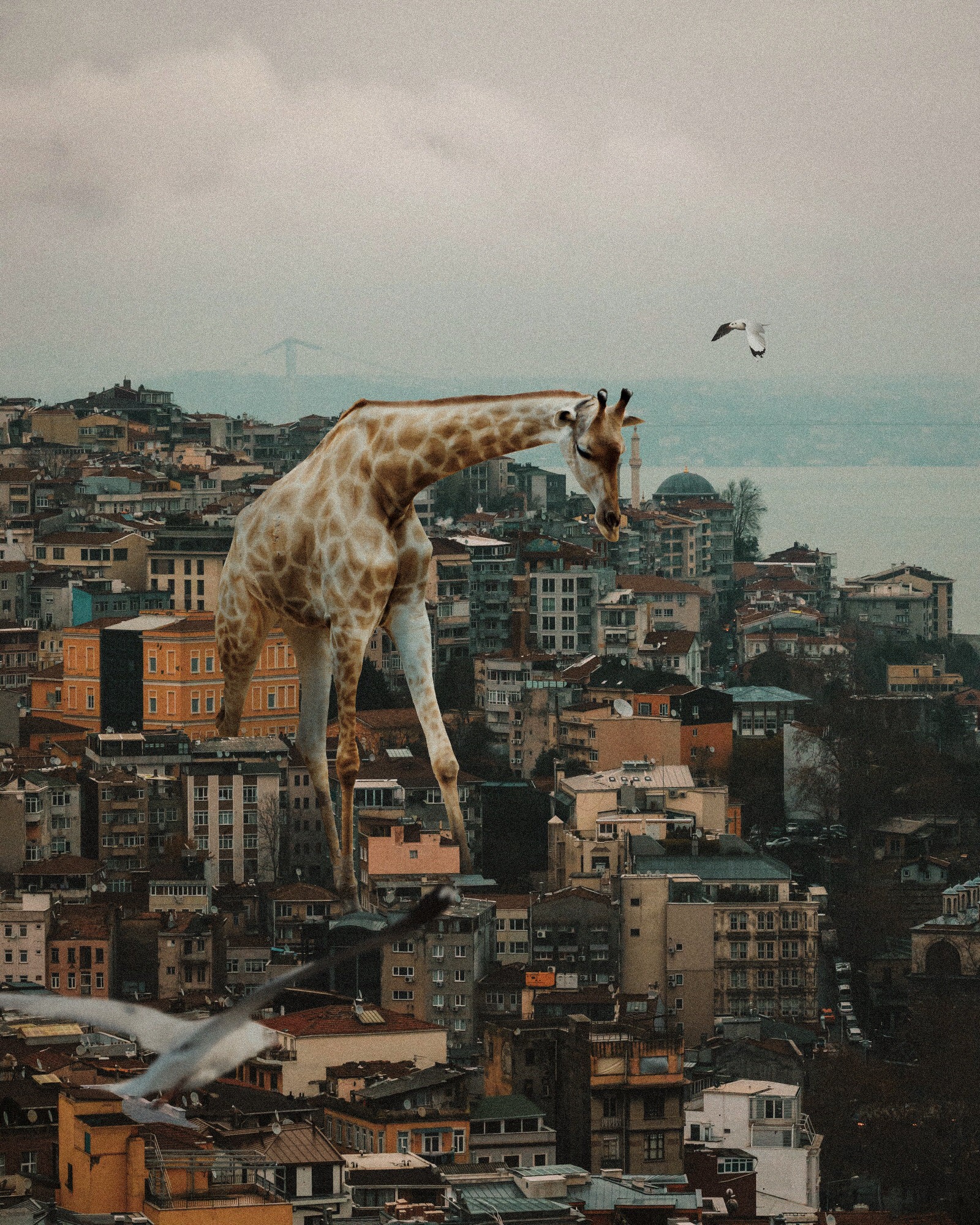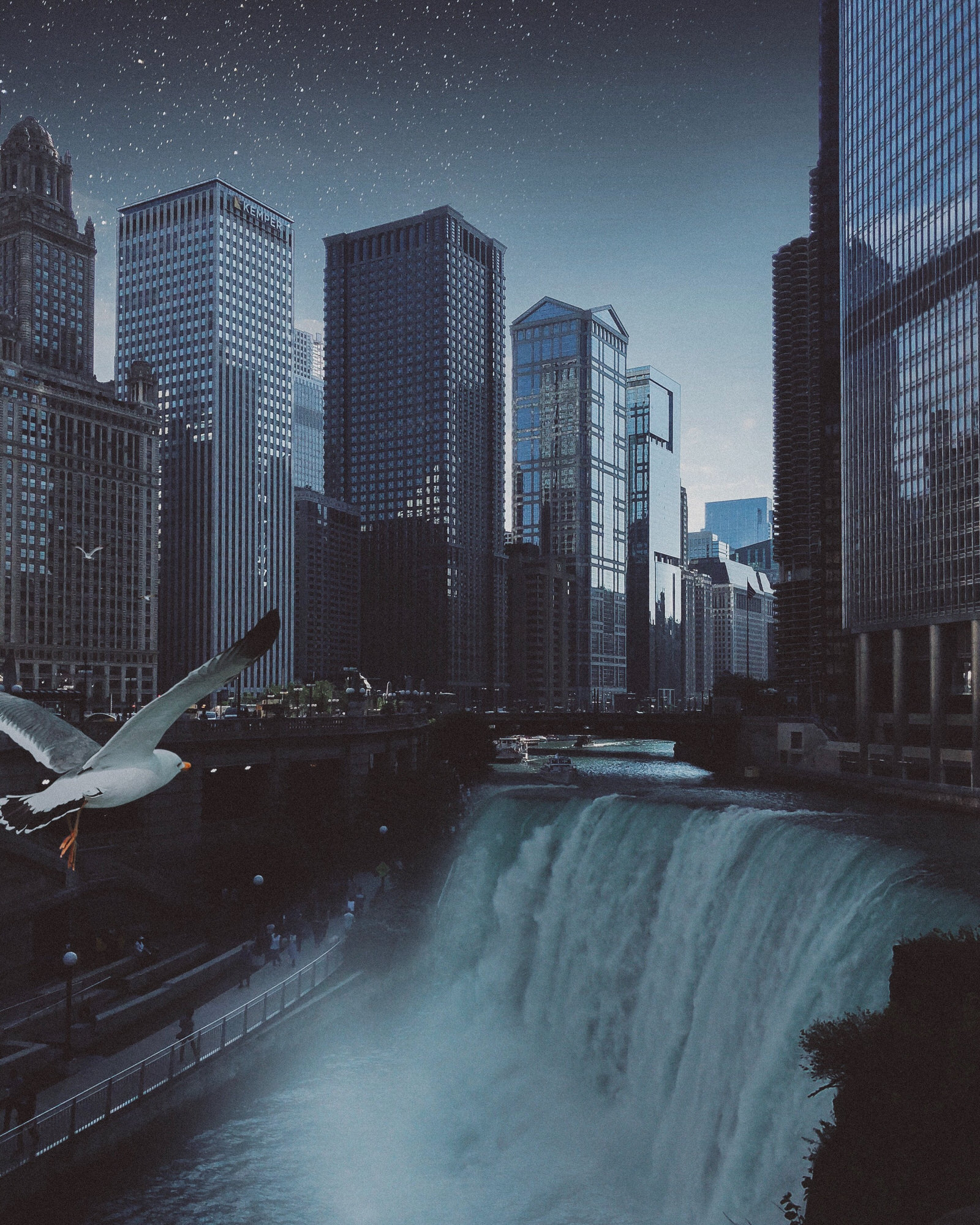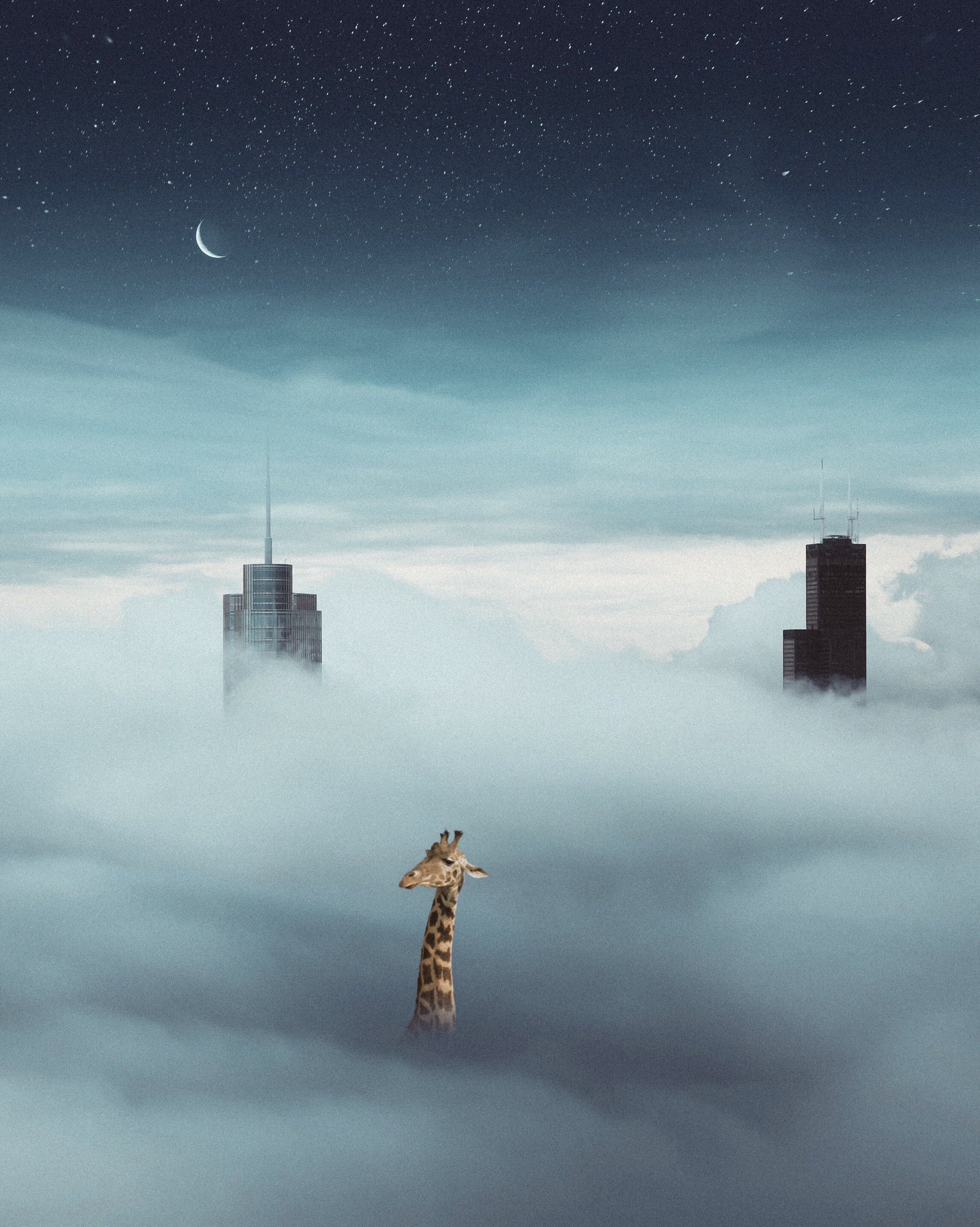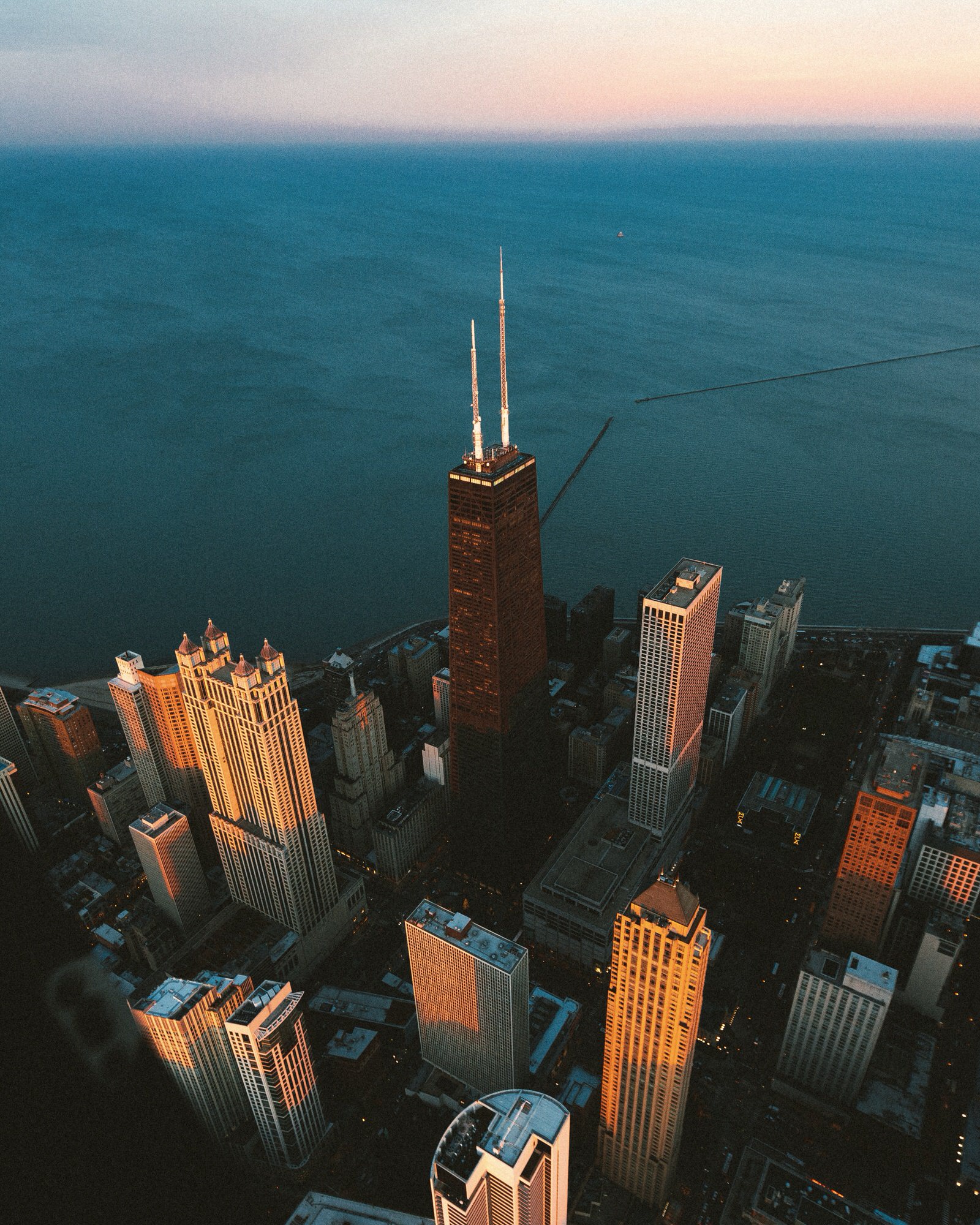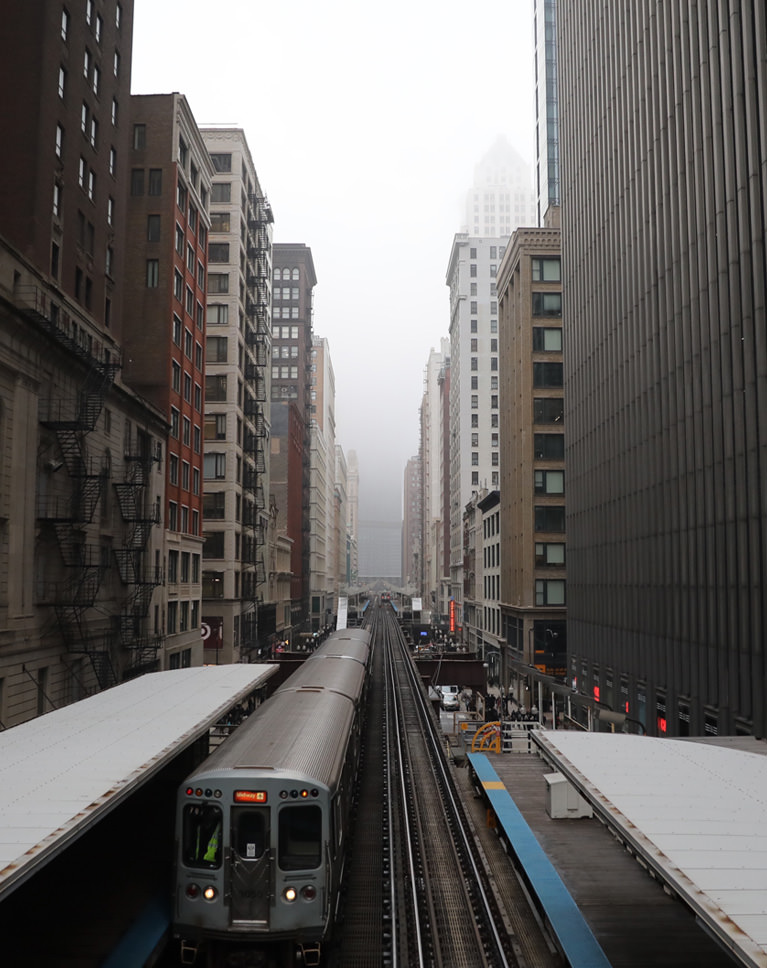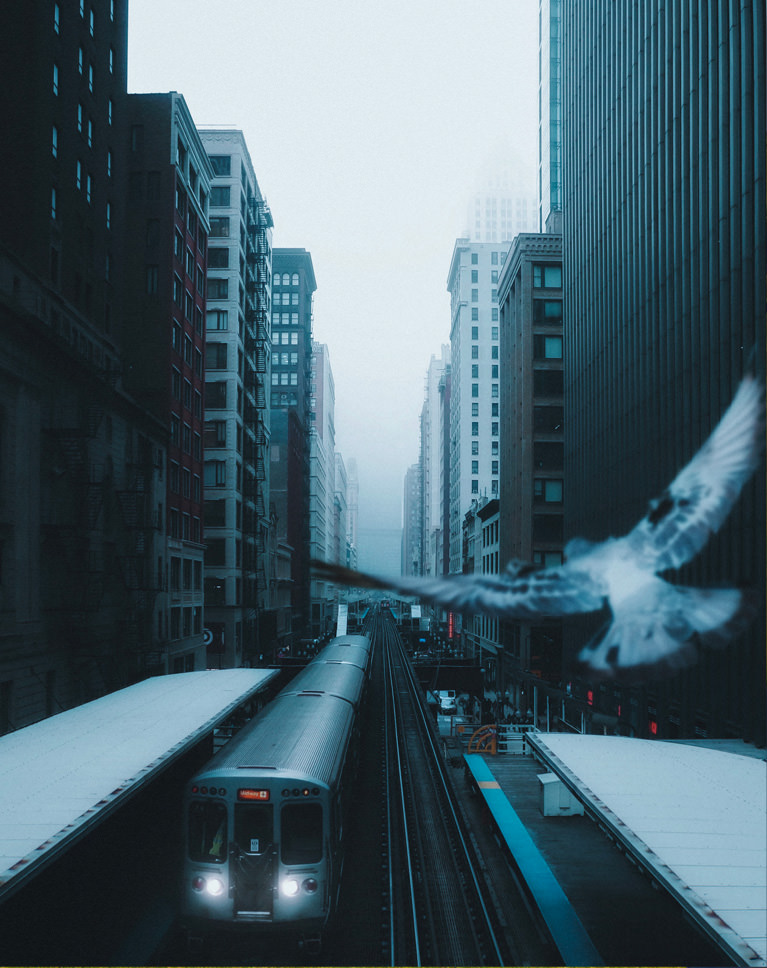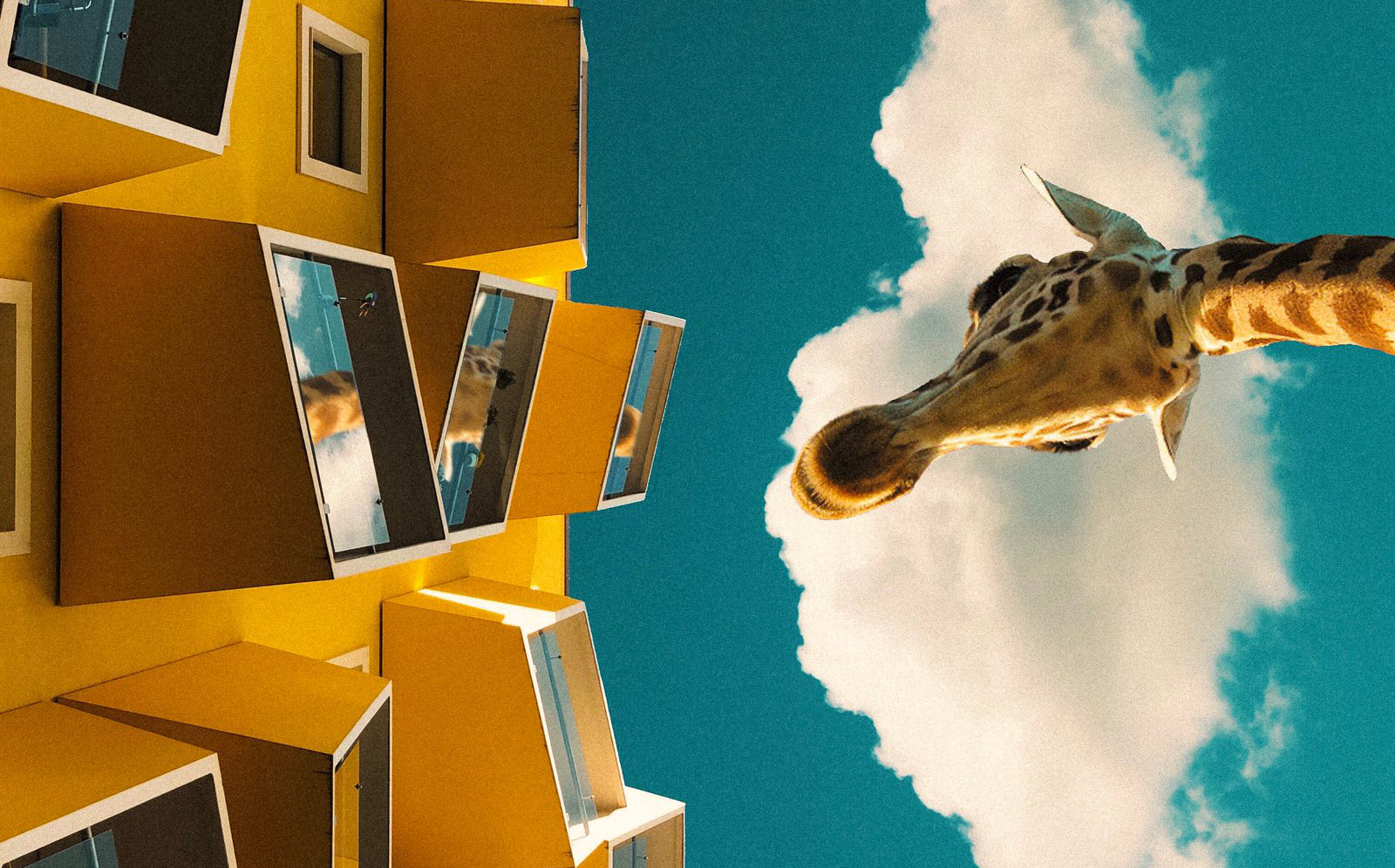
Tall Giraffes and Small Screens: How Elise Swopes Creates Surreal Imagery on Her Smartphone
Nine years ago, Elise Swopes wasn’t a photographer. She was a graphic designer who got a new iPhone 4. On a whim, she downloaded Instagram, and slowly, her style evolved. She began learning more about photography composition and editing, racking up Instagram followers and brand affiliations. But throughout it all, her devotion to mobile-only photography never wavered. She is a photographer born from the smartphone era.
Today, Elise has grown into a multitasking one-woman brand, with an inspirational blog, a podcast, and a new art show in her native Chicago. Her hallmark surrealism – giraffes, waterfalls, outsize moons – adorn the steely urban landscapes she captures from great distances.
Recently, Elise swung by the PHLEARN studio to record a comprehensive tutorial on mobile photography editing, and we caught up with her afterward to learn a little more about her background and influences.
Why did you start taking photos?
I started taking photos when I started Instagram in 2010. I initially really just started taking selfies and pictures of my mac and cheese and of my cat. But it wasn’t until I found this very, very small community of people who were editing and creating with their phones.
I was a really broke college student at the time, failing most of my classes, could not pay any of my bills. I had no job. The best thing I had was an iPhone 4, and I think the screen was cracked, but I used it to my advantage as a camera, using the free apps on there, and I kind of built a brand for myself on Instagram.
My background comes from graphic design, though; I’ve been a graphic designer since I was about nine or 10 years old. So that love assisted me on the creative process when it came to iPhone photography and Instagram.
You did, eventually, buy a proper camera, but a few years later. What prompted you to actually make that leap?
I was tired of using my boyfriend’s camera. I actually didn’t buy my own camera until last year, in 2018. And I think it was just something in me that really wanted to hold tight within the mobile-photography realm. You know, there were plenty of times when it could’ve been easier for me to not do something on my phone, or go to my computer. But for me, I really wanted to push the envelope for mobile creating and editing.
And so the process of getting a real camera, at this point, is that there are more opportunities when it comes to higher-end brands and larger-scale projects. I used to do huge projects with my phone. I’ve been to Japan, I’ve been to Dubai, I worked with Coach. I worked with some of the biggest brands in the world, just taking photos with my phone. But at this point, in my career, I’m at a little bit of a different level.
Right. And there’s also that professionalism element, where you want to show up with an actual camera.
Yes. It looks funny if you come with just your phone.
Is there anything else that you bring along now? Like, have you expanded into lighting rigs?
As of recently, I have been messing with lighting. I got an RGB, this huge light that I’ve been playing with. And I do like LEDs and things that can blast a little bit of light to do something. But as far as bringing around reflectors and such, I don’t really play around with those. Whatever nature gives me is what I try to play around with.
And to clarify, just throughout all of this, even as your photography is changing, you’re still editing exclusively on mobile, right?
Yeah, everything.
When you bought your first camera, what kind of stuff did you look for?
I was looking for a camera that was going to be able to do what I wanted it to do.
What is that?
I was testing out cameras along the way that were my boyfriend’s, and I kind of felt how things would shoot and what they couldn’t do and what they could do. At some point I really became interested more in Canon. I liked Sony products, but at the end of the day I didn’t really want to invest in a whole new lens setup, because my boyfriend already had Canon and I’d been sharing lenses with him.
For me, my biggest concern really wasn’t so much the body – it was the lenses. I really, really needed lenses that could get me some faraway shots. My 70-200 is like my best friend. I love it. And I do a lot of helicopter rides and a lot of above-ground types of things, shooting cityscapes. It’s nice for me to be in a certain place where I’m a little more far away sometimes, and so being able to zoom in and zoom out and have a different sense of vision is really, really key.
Why do you prefer to stay away, to stay farther and zoom in?
I don’t know. I’m not much of a shooter in the midst of things. I don’t know what that really means, necessarily. I just like being away and I like being high up. I like gathering an image as a whole, rather than just having one very static situation. I like filling space a lot. And so I think being far away allows me to kind of play with space, where there’s more sky or there’s more ground – just more stuff that can be done to it.
I’m a surreal artist, at the end of the day. I’m really just trying to figure out how I can add my special magic to whatever I’m working on. So I have to capture content that’s going to allow me space and accessibility to just dream and be.
Is there a feeling that you want to evoke, that you want viewers to have when they see your photos?
I always like to say my middle name is Cozy. I like to think of a moodiness, just a dream-like magic – but not corny magic. I don’t really like super-corny stuff. I like the straightforward. “This is dope” type thing, you know? I want it to be approachable. I want it to be digestible.
So why, then, do you merge real things like giraffes or waterfalls with urban landscapes?
I think it has a lot to do with my longing for nature. I definitely live in one of the flattest cities in the country. So having that option to play around with the tallness of the skyscrapers, and balance those with things I’ve seen in other countries, like mountains and stuff… I haven’t really been able to see that until recently.
All of my life, I hardly ever traveled. I hardly got to do much. My family wasn’t rich at all, you know. And so coming up, we really were struggling quite a bit. There’s this interesting longing for having a part of what I can’t get in my hands, and being able to blend that in.
As someone who lives in Toronto, I feel you. I’d love to talk about the creative process: when you’re starting a new project, I’m wondering what your checklist is, if you have one. How do you start a new project?
Well, if it’s a personal project, I feel out what I haven’t done in a while, in order to kind of stay in my own lane, but also keep reinventing myself. So if I haven’t done a giraffe edit in a while, I’m going to make sure that I capture content that will allow me to edit a giraffe in it. I have some shots of the city that I can play around with, to add a waterfall, because I haven’t done a waterfall edit in a while.
For the business stuff, I’ll get an email with either an offer for a gig or a brief or something. I’ll run through with the agency or the brand what the expectations are. And then I’ll create the creative direction for everything. So I’ll conceptualize the imagery, whether it’s video, whether it’s still, whether it’s a podcast or just events. I have to conceptualize the way I want to present it to people. Once I conceptualize that creative, I give it to the brand or the agency and then they’ll approve. Once they approve, I’ll start creating that content.
You’ve mentioned giraffes a few times. You’ve mentioned staying in your own lane, which I take to mean that people have an expectation of what your style is going to be and you want to match that. Why do you like giraffes and waterfalls so much?
Well, the giraffe specifically, it really didn’t happen for any reason. I was just putting a lot of different animals in a lot of my photos and people started gravitating more towards the giraffes. I think the giraffe also is a really good symmetry to how tall the buildings are in the city and in certain places. I didn’t really realize that until recently when I did another interview and someone’s like, “It kind of fits in there because it’s tall.” And I was like, “Oh, that’s probably why.” I’m accidentally just compositing things without even realizing the real nature.
It did seem like the giraffes and also waterfalls were all vertical images.
Right. Well, I create vertically for Instagram specifically, and so the way that the perspective of water goes or the way that giraffes fit just works. But I don’t think it’s necessarily all the composition. These scenes aren’t meant to be destructive or scary. It really is just this beautiful utopia where, you know, if there’s a waterfall downtown, you just gotta make sure you bring your umbrella for the day.
Now the water’s my thing. Now people have different thoughts about it no matter what I assume it might mean, and the same with the giraffe. You know, people expect the giraffe to be consistent with me. Sometimes I forget, or maybe I just don’t think that I’ve shot anything that works. But people will comment on my photos and be like, “Hey, you haven’t done a giraffe edit in a while. Where’s the giraffe?” It’s like accidental branding. It’s like accidental everything, really.
Do you find that constricting?
No, I love it. I think it’s great. I mean, at the end of the day, I’m just trying to be an artist and I want to live my authentic self. And as much as people ask me about giraffe stuff, I still do it when I want to. It’s not like I have to, you know? I’m still proud of each and every one I’ve done. I have giraffe stuff all over my house now. The giraffe is a part of me. The waterfalls are a part of me. All these things are a part of who I am now.
So what happens if you hit a block creatively?
I don’t feel that.
You never feel a creative block?
No. I mean, I think the hardest parts for me are not creative blocks. It’s just, do I have time to do what I need to do to get what I want? Can I go on a helicopter ride? Can I go out and shoot real quick at 7 p.m. on this day because this is when the light is going to be good? Is the weather going to be on my side? It’s not so much about me not being inspired, it’s just about me being disciplined to go and get something, and there being an opportunity for me to get it. That’s all.
I have a different mindset now than I used to about awareness, mindfulness, acceptance, action, and things like that. I think before, when I wasn’t so sure of myself, there was a feeling of, “Oh, I’m not inspired.” Inspiration is not a catalyst to motivation. Action is a catalyst to motivation, and people don’t really understand that. The more you do something, the more you’re inspired to continue, and if you’re always worried about starting, you’re never going to do anything. Inspiration is not some kind of out-of-thin-air type of thing. You’ve got to grab it, you’ve got to go and do it.
I was going to ask if there was a quote that always fires you up, but it sounds like you just said it.
Yeah. That was it.
Is there a quote from someone else that gets you fired up?
Not so much fired up, just feeling more understood. There’s a quote by Eckhart Tolle. I read a book by his, it’s called The Power of Now – a super, super special book. “Failure lies concealed in every success, and success in every failure.”
Is there a particular photographer who’s influenced your work or who you admire?
That’s your boyfriend, right?
Yeah, he’s really dope. We met before either of us were photographers. Having someone by your side who gets it, who is supportive, who is on a journey of growth with you has really been very helpful. But also he’s an amazing artist.
But when it comes to a mentor or someone like that, I can’t think of anyone. There’s so many people to respect, I think at this point there’s no book on what I do. I feel like we’re inventing something so different and so interesting, and the best thing I can do is just live in the moment and be present and bring my best self whenever possible. And that’s what I’m trying to do.
Do you have a book that you would recommend to other creative people?
The Power of Now by Eckhart Tolle.
That’s the book you mentioned with the quote. What makes that a good book for people in the creative industry specifically?
I think that the creative industry can be very lax on self-care and self-love, mindfulness, and awareness. I think everyone’s just trying to spread themselves way too thin. You’ve got to become a boss at your thing. And then also, you have to make sure that you’re staying healthy and mindful and aware of your thoughts.
You’re not going to feel the joy of success without feeling peace within yourself. And I think that is the first step for a lot of artists, which they skip. They figure it out a little later. But it’s really about self-care and self-love first when you’re an artist.
You focus on a lot of different things. You have a podcast; you have a blog. You have a book coming out. With all these things going on, what are you focusing on right now?
Right now, I’m focused on a gallery event that I’m producing for myself, my first solo gallery, which is going to be very experiential. We’ve got a magician. We’ve got all the five senses: touch, taste, smell, sight, sound, you know, all types of everything.
Do you have a giraffe?
There’s going to be a giraffe! Not a real one, though.
You can watch Elise’s full PHLEARN tutorial here, or check out her Instagram for more creative shots of wild animals and water bodies overrunning cities worldwide. Still curious to see more of her work? Then also visit her website to find her “Swopes Note” blogs, podcast, YouTube channel, and more.
